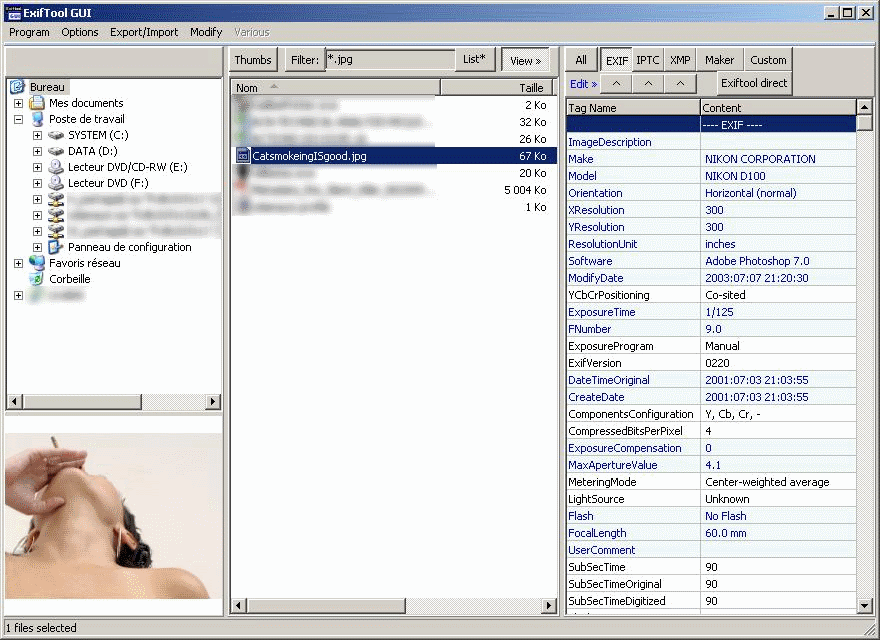
This is done by specifying a file extension of '.XMP', '.ICC' or '.ICM' for OUTFILE. The file is created from a combination of information in FILE and tag values assigned on the command line. Currently, this can only be done with XMP, ICC/ICM, MIE, VRD and EXIF files. Combining the -overwrite_original option with -o causes the original source file to be erased after the output file is successfully written.Ī special feature of this option allows it to be used to create certain types of files from scratch.

Output directories are created if necessary. The output file is taken to be a directory name if it already exists as a directory or if the name ends with '/'. See the -w option for FMT string examples. Also, %c may be used to add a copy number. (Without this option, the original file is renamed to FILE_original and output is sent to FILE.) The output file name may also be specified using a FMT string in which %d, %f and %e represent the directory, file name and extension of FILE. Set the output file or directory name when writing information. > exiftool -Orientation=6 -n a.jpg -o OUTFILE or FMT ( -out) This option also disables the inverse print conversion when writing, so the following two commands have the same effect: > exiftool -Orientation='Rotate 90 CW' a.jpg Option Summary -TAG or -TAG Extract or exclude specified tag Note that multiple single-character options may NOT be combined into one argument because this would be interpreted as a tag name. Many single-character options have equivalent long-name versions (shown in brackets), and some options have inverses which are invoked with a leading double-dash. OPTIONSĬase is not significant for any command-line option (including tag and group names), except for single-character options when the corresponding upper-case option is defined. However, a filename may be specified or the -ext option may be used to force processing of files with any extension. Note: If FILE is a directory name, then only file types with recognized extensions are processed when reading, and only writable types are processed when any tag is written. | -ĪRW r JPEG r/w RA r | Photoshop IRB r/w/c

(Be sure to verify that the new file is OK before erasing the original.) Once in write mode, exiftool will ignore any read-specific options.īelow is a list of file types and meta information formats currently supported by ExifTool (r = read, w = write, c = create): File Types | Meta Information This causes FILE to be rewritten, and by default the original file is preserved with _original appended to the file name. To write or copy information, new values are specified with the - TAG= syntax or the -tagsFromFile or -geotag options. Information is read from the source file and output in readable form to the console (or written to an output text file with the -w option). FILE is a source file name, directory name, or - for the standard input. DESCRIPTIONĪ command-line interface to Image::ExifTool, used for reading and writing meta information in image, audio and video files. Exiftool - Read and write meta information in files SYNOPSISĮxiftool FILE.Įxiftool - TAG.] FILE.Įxiftool | d| x] ]įor specific examples, see the EXAMPLES sections below.


 0 kommentar(er)
0 kommentar(er)
